LM258 Op-Amp IC: Specifications and Datasheet
This article aims to provide an in-depth exploration of the LM258, delving into its characteristics, practical applications, and its place within the broader LMxx family. It will cover the LM258's basic attributes, technical specifications, and pin configuration, its practical implementations in the industry, identifying how it excels in applications requiring precision and stability under a range of conditions. This guide will equip you with the knowledge to utilize the LM258 effectively, ensuring optimal functionality and innovation in your electronic projects.Catalog
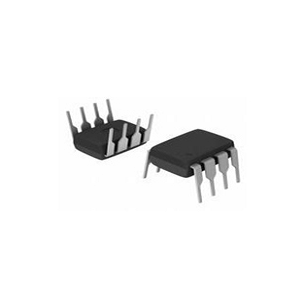
What is the LM258?
The LM258 IC is cherished for its versatility as a dual operational amplifier (op-amp), characterized by its high gain and internal frequency compensation. This component holds a special place in the realm of single power supply applications, working seamlessly over a range of voltages. Its influential features encompass high direct current (DC) voltage gain, extensive bandwidth, and the ability to incorporate ground within input common-mode voltages, allowing for a substantial output voltage swing. Such capabilities make it indispensable in DC gain blocks, transducer amplifiers, and single power supply circuits, where it performs reliably even with the standard 3.3V supply commonly found in digital systems. Among the LM258’s notable attributes is its high DC voltage gain, which ensures minimal input signals are magnified to a useful level. The broad bandwidth it offers supports a diverse range of frequency applications, suitable for myriad electronic projects. Integrating ground into input common-mode voltages simplifies design and enhances flexibility that are highly valued in complex circuitry.
Substitutes for LM258
• LM258P
• LM358P
• LM258NG
• LM2588-ADJMWC
LM258 Pin Configuration
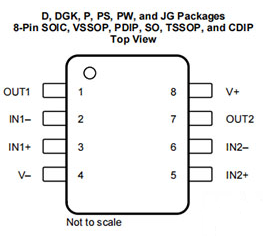
|
NAME |
LCCC(1) |
SOIC, SSOP, CDIP, PDIP, SO,
TSSOP, CFP(1) |
I/O |
DESCRIPTION |
|
IN1- |
5 |
2 |
I |
Negative input |
|
IN1+ |
7 |
3 |
I |
Positive input |
|
IN2- |
15 |
6 |
I |
Negative input |
|
IN2+ |
12 |
5 |
I |
Positive input |
|
OUT1 |
2 |
1 |
O |
Output |
|
OUT2 |
17 |
7 |
O |
Output |
|
V- |
4 |
4 |
- |
Negative (lowest) supply or ground (for single-supply
operation) |
|
NC |
1, 3, 4, 6, 8, 9, 11, 13, 14, 16, 18, 19 |
- |
- |
No internal connection |
|
V+ |
20 |
8 |
- |
Positive (highest) supply |
LM258 Symbol, Footprint, and CAD Model
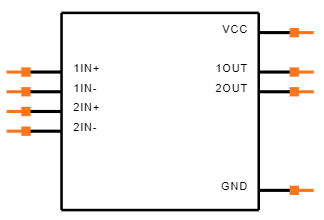

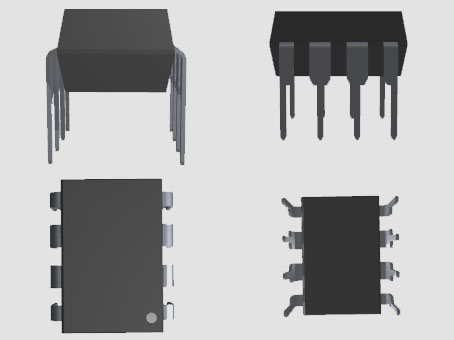
Features of LM258
Voltage Range
The substantial single supply voltage range from +3.0V to +32V and dual supply of ±16V offers operational versatility. This makes the LM258 adaptable to applications ranging from low-voltage portable devices to robust industrial systems. You can leverage this flexible voltage range for both battery-powered and power-grid-dependent systems.
Low Noise Interference
Low noise interference enhances the precision and sensitivity required in specific applications. Audio processing and sensor signal conditioning are notably improved by reduced noise, which amplifies the clarity and accuracy of output signals. Through practical application, it's observed that minimizing noise boosts system performance, especially in environments with stringent signal integrity requirements.
Bandwidth of 1 MHz
Operating with a bandwidth of 1 MHz, the LM258 caters to applications requiring moderate speed signal processing. This ensures reliable performance in analog-to-digital conversion systems, data acquisition, and other signal modulation tasks. Effective bandwidth management is great for achieving system speed and resolving complex signal variations.
Low Supply Current
A remarkably low supply current of 500µA makes the LM258 highly efficient, making it suitable for battery-operated devices and energy-sensitive applications. A reduced supply current translates to lower power consumption, contributing to extended battery life and more sustainable system designs, aligning with the modern emphasis on energy-efficient electronics.
Temperature Range
Operating efficiently within a temperature range of -25°C to 85°C, the LM258 consistently performs across varying environmental conditions. This wide temperature range supports both electronics in controlled settings and industrial applications in harsher environments, ensuring device reliability and longevity.
Power Dissipation
With power dissipation of 830mW, the LM258 can operate without overheating for maintaining stability and protecting other components. Effective heat management is good for prolonged operational integrity, making the LM258 a dependable choice for thermal-sensitive designs. Incorporating these features, the LM258 stands out as an efficient, versatile operational amplifier, offering benefits in a variety of applications. Harnessing its full potential requires a deep understanding and adept management of its specifications, enriching the pursuit of innovative electronic solutions.
LM258P Specifications
Technical specifications, features, and parameters of the Texas Instruments LM258, along with parts that have similar specifications to the Texas Instruments LM258P.
|
Type |
Parameter |
|
Lifecycle Status |
ACTIVE (Last Updated: 2 days ago) |
|
Mount |
Through Hole |
|
Package / Case |
8-DIP (0.300", 7.62mm) |
|
Operating Temperature |
-25°C~85°C |
|
JESD-609 Code |
e3 |
|
Moisture Sensitivity Level (MSL) |
1 (Unlimited) |
|
ECCN Code |
EAR99 |
|
Terminal Position |
DUAL |
|
Supply Voltage |
5V |
|
Pin Count |
8 |
|
Power Supplies |
+1.5~+15/+3~30V |
|
Operating Supply Current |
1mA |
|
Output Current |
30mA |
|
Architecture |
VOLTAGE FEEDBACK |
|
Common Mode Rejection Ratio |
70 dB |
|
Voltage - Supply, Single/Dual (±) |
3V ~ 32V/±1.5V ~ ±16V |
|
Input Offset Voltage (Vos) |
5mV |
|
Voltage Gain |
100dB |
|
Low-Offset |
NO |
|
Voltage - Input Offset |
3mV |
|
Micropower |
NO |
|
Programmable Power |
NO |
|
Factory Lead Time |
6 Weeks |
|
Mounting Type |
Through Hole |
|
Number of Pins |
8 |
|
Packaging |
Tube |
|
Part Status |
Active |
|
Number of Terminations |
8 |
|
Terminal Finish |
Matte Tin (Sn) |
|
Number of Functions |
2 |
|
Base Part Number |
LM258 |
|
Operating Supply Voltage |
16V |
|
Number of Channels |
2 |
|
Nominal Supply Current |
1.2mA |
|
Slew Rate |
0.3V/µs |
|
Amplifier Type |
General Purpose |
|
Current - Input Bias |
20nA |
|
Current per Channel |
30mA |
|
Unity Gain BW: Nom |
700 kHz |
|
Average Bias Current-Max (BI) |
0.3µA |
|
Frequency Compensation |
YES |
|
Low Bias |
NO |
|
Bias Current-Max (BI) @25C |
0.15µA |
|
Dual Supply Voltage |
9V |
LM258 Functional Block Diagram

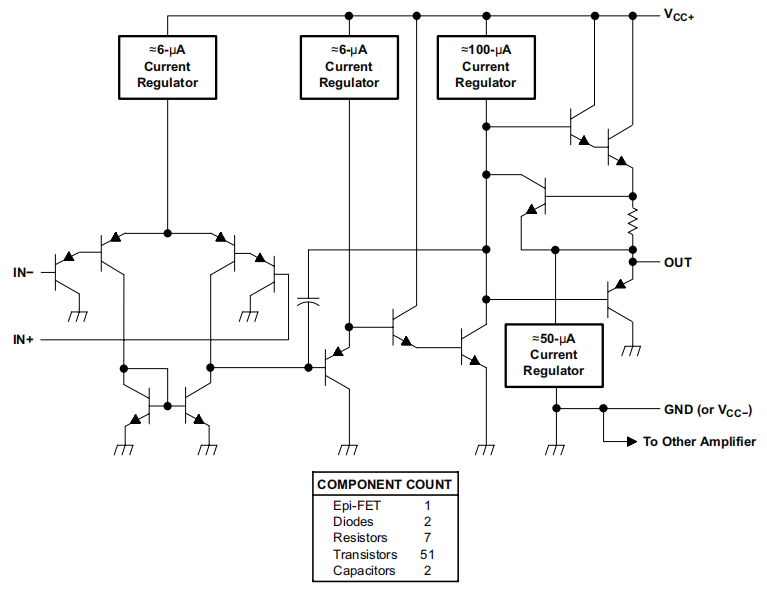
The input stage predominantly comprises a differential amplifier. This component amplifies the voltage difference between two signals while rejecting any common-mode interference. Matched transistor pairs are often used, ensuring minimal input bias current and offset voltage. Following the input stage, the intermediate stage further amplifies the voltage. This generally involves using additional amplification stages such as common-emitter or common-base configurations. These designs enhance gain without increasing power consumption or complexity. In practice, balancing gain and bandwidth is needed to maintaining signal integrity across different scenarios. The output stage is engineered to provide high current drive capabilities while maintaining stability across various loads. Class AB amplifier configurations are employed to ensure low crossover distortion and high efficiency. A practical takeaway is that proper thermal management can extend the device’s longevity and reliability. The LM258 can function on either single-supply or dual-supply systems, increasing its flexibility for different applications. For example, single-supply systems simplify design and reduce costs. Dual-supply systems offer a wider dynamic range and better linearity. Evaluating the trade-offs between simplicity and performance is require for determining the best power supply approach.
Layout Techniques for the LM258
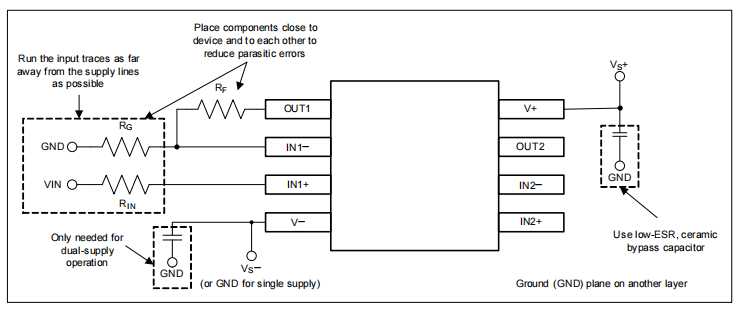
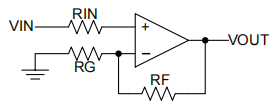
How to Effectively Utilize the LM258?
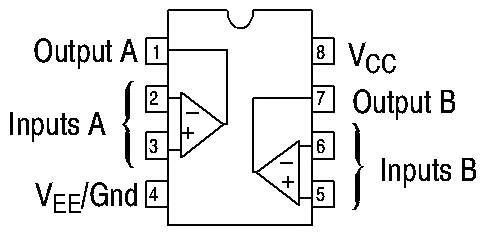
The LM258 encompasses two independent operational amplifiers (op-amps):
• It enables usage in various circuits as an amplifier, comparator, or oscillator.
• This versatile component supports a broad range of electronic applications.
• It acts as a building block in both analog and digital systems.
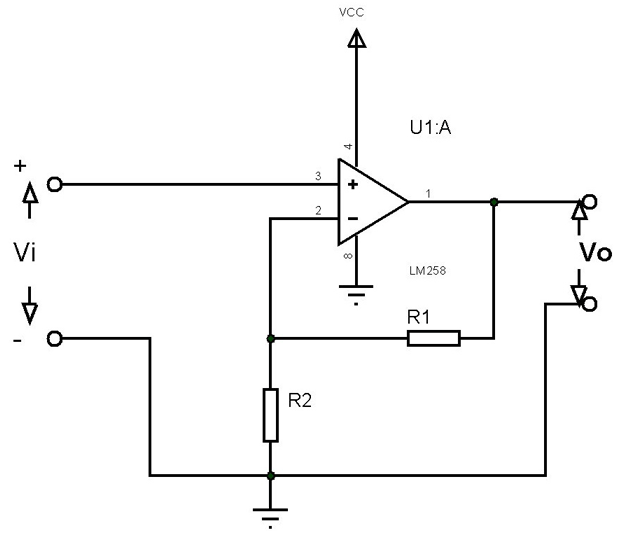
To delve into its application, let's explore setting up a non-inverting amplifier with one of the LM258's op-amps:
• Connect the input signal to the non-inverting terminal to achieve a positive phase shift between the input and output signals. By meticulously selecting resistor values, you can control the gain of the amplifier.
For instance, consider R1 = 100 ohms and R2 = 10 ohms with an input voltage Vi of 20mV. The output voltage Vo can be computed using the formula:
![]()
This results in an output of 220mV, demonstrating the op-amp's efficacy in signal amplification, lending it the power to breathe life and clarity into signals weak and subdued.
Applications of LM258
Digital and Analog Electronics
A linchpin in digital and analog electronics, the LM258 features dual operational amplifiers that excel in performance. Its ability to work with dual power supplies sans frequent recalibration makes it a trusted choice. This seamless integration ensures less downtime and fewer maintenance hassles, very much reflecting a dependable workhorse in electronic circuits.
Power Supplies
The LM258 proves its mettle in power supply systems by handling voltage regulation, stabilization, and current control with precision. For example, in designing uninterruptible power supplies (UPS), its role ensures steady outputs, for systems relying on uninterrupted operation.
Amplifiers
Used widely in various amplifier configurations, the LM258 shines in both audio amplifiers and signal amplification processes. It elevates high-fidelity audio equipment by minimizing distortion and enhancing precision, ensuring an immersive audio.
Oscillators
The LM258's adeptness extends to oscillator circuits, generating accurate waveform signals that benefit communication systems and signal processing units. The stable frequency generation and signal clarity it provides are quintessential in ensuring seamless communication.
Voltage Comparators
When employed as a voltage comparator, the LM258 excels in decision-making circuits, comparing voltages and adjusting outputs as necessary. Automation systems especially benefit from this responsiveness for immediate operational adjustments.
Home Appliances
In home appliances, the LM258 boosts performance and reliability. Refrigerators, washing machines, and air conditioners integrate this component to efficiently control and monitor operational parameters, enhancing everyday convenience.
Programmable Logic Controllers (PLCs)
PLCs gain substantially from the LM258's inclusion, which aids in precise control tasks. Its robust performance under various conditions makes it highly suitable for industrial automation, ensuring that control tasks are executed reliably.
Measuring Instruments
Precision is great in measuring instruments, and the LM258 does not disappoint. Incorporated in voltmeters, ammeters, and various sensor interfacing units, it ensures accurate readings and maintains signal integrity for any measurement application.
LM258 Packaging
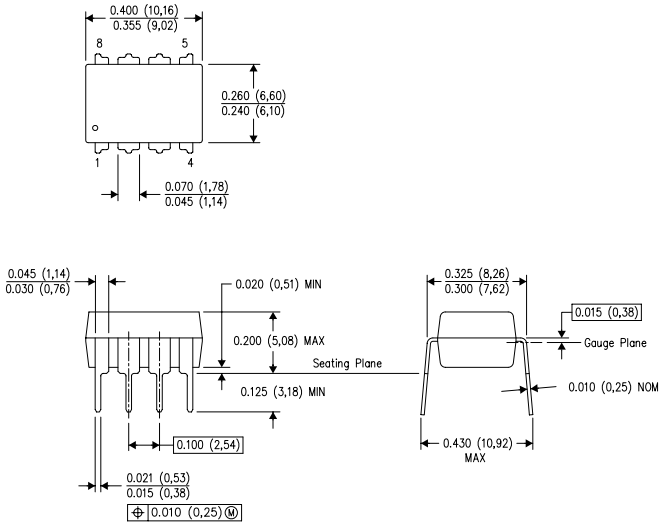
LM258 Manufacturer Information
Texas Instruments (TI), headquartered in Dallas, stands as a monumental figure in the semiconductor industry. The company's product portfolio not only emphasizes analog chips and embedded processors but also spans across various educational and digital processing technologies. Texas Instruments epitomizes a blend of technological advancement and educational commitment. By delivering high-performance analog chips, embedded processors, and pioneering educational tools, TI stands at the forefront of meaningful technological progression. This holistic approach serves as a model for leveraging technological innovation to drive both industry growth and educational development.
Datasheet PDF
LM258P Datasheets:
LM158/LM258/LM358/LM2904 03/Oct/2018.pdf
Frequently Asked Questions [FAQ]
1. What is the difference between LM258 and LM358?
Both LM258 and LM358 are dual operational amplifiers. The distinction lies in their application scope and environmental compatibility. The LM258 is an industrial-grade component, boasting a wider temperature range. This makes it suitable for more demanding and variable operational environments, ensuring reliability under diverse conditions. Such components are favored in settings where the ambient temperature can fluctuate notably. On the other hand, the LM358, classified as commercial-grade, is deployed in environments with relatively stable and moderate temperature conditions. Consideration of the operating environment is needed when selecting between these two components.
2. What is the difference between LM258 and LM393?
While the LM258 is an operational amplifier, the LM393 serves as a voltage comparator. Despite the LM258's capability to undertake comparison tasks, the LM393 is specifically engineered for this purpose. The design and precise mechanism of the LM393 often lead to more efficient and accurate comparisons. This tailored performance is highly valuable in analog signal processing applications. It’s important for others to select the component that best caters to the specific functional requirements of the circuit.
3. Can LM258 replace LM348?
The LM258 and the LM348 differ in their architectures. The LM258 is a dual-channel operational amplifier, whereas the LM348 features a quad-channel configuration. This difference necessitates thorough consideration of the existing circuit design when pondering a replacement. For instance, substituting an LM348 with an LM258 would require reevaluating the channel requirements. Potentially, this demands redesign and adjustment to accommodate the reduced channel count. Clarity on the circuit's operational needs and limitations can guide a more informed decision, ensuring that the end performance remains uncompromised.